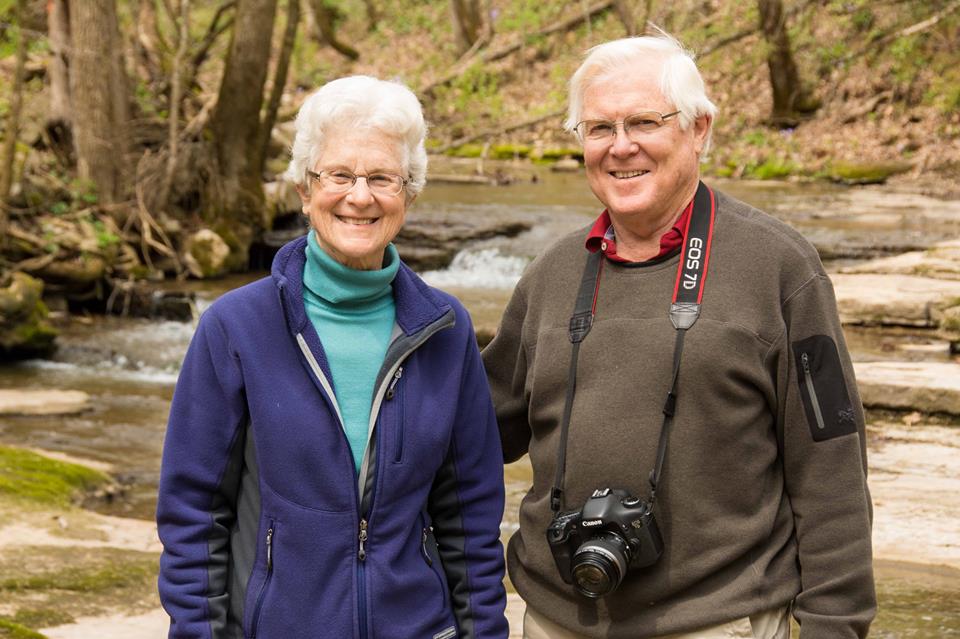By Nicholas Martin, Ph.D., Professor of Physics, University of Kentucky
Keith Bradford MacAdam was a faculty member in the UK Department of Physics & Astronomy from 1977 onward. He was an experimental atomic physicist specializing in atomic collisions involving Rydberg atoms.
Keith began his research career in physics as a graduate student at Harvard University. His Ph.D. advisor was Norman Ramsey, author of a classic book in his field, Molecular Beams (1956), and a future Nobel Prize Laureate (1989). Keith's dissertation was entitled “The Anisotropy of the Electric Polarizability of H_2 and D_2.” Keith then did three years as a post-doctoral fellow with Jim Slevin and Hans Kleinpoppen at the Physics Department, University of Stirling, Scotland, where he also held a Frank Knox Memorial Traveling Fellowship from Harvard University. This introduced him to atomic and electron collisions, as opposed to the work in Ramsey’s group which was essentially the behavior and structure of isolated molecules in external fields, which may be classed as spectroscopy.
At Stirling, Keith worked on the very first atomic physics coincidence experiment, a powerful technique that enables detailed information about collisions, previously only employed in experimental nuclear physics. The Stirling experiment observed photons, emitted from excited helium atoms, in coincidence with the scattered electrons that had excited those atoms. This seminal work resulted in Keith’s first publication in Physical Review Letters, one of the most prestigious physics journals. This publication marks the first of huge numbers of papers from researchers all over the world on the so-called topic of “alignment and orientation” during atomic collisions. Back in the United States, Keith did a second post-doc, beginning with Willis Lamb (Nobel Prize 1955) at Yale, and moving with Bill Wing to Arizona, where he had his introduction to highly excited Rydberg states, with a series of four publications on their fine structure.
Keith’s Ph.D. and his post-docs thus gave him a good grounding in a range of atomic physics topics using a wide variety of sophisticated experimental techniques. In 1977 he was appointed Assistant Professor in the Department of Physics & Astronomy at the University of Kentucky. He began a research program of his own on ion–Rydberg atom collisions that melded all the experimental techniques he had learned at Harvard, Stirling, Yale, and Arizona. Rydberg atoms are atoms where the outermost electron is in a highly excited orbit. These orbits are characterized by the principal quantum number “n”, with the lowest one in atomic hydrogen being n=1. In fact hydrogen would be the atom of choice if it weren’t for the fact that atomic hydrogen (i.e., the single atom, as opposed to the molecule which is two atoms joined together) is very difficult to produce in the lab. Keith used the next best type of atoms, the alkalis, which consist of a single electron outside a tightly bound closed core of electrons. Of these, sodium (Na) is a perfect choice since it can be easily manipulated into high-n Rydberg states using two-step laser excitation. Such high-n Rydberg states have n values in excess of 20—leading to jokes about single atoms that won’t go through letter boxes (mail slots)!
The first paper out of his lab was a Physical Review Letter describing experiments on the “n-Dependence of l-Changing Collisions Between He+ Ions and Na.” Over the next 28 years he published more than 50 papers on collisions involving Rydberg atoms. Keith was a hands-on experimental physicist and expected his students to be the same; he would ask a prospective graduate student, “Did you take your bike to pieces as a child?” The taking apart was the important thing, putting it back together was irrelevant! Keith invented many novel experimental techniques which kept him in the forefront of his field. A good example is the “Stark Barrel,” a device for rapidly re-orienting the electric field in a small region of space, where collisions had taken place, on time-scales of microseconds. Keith’s research program was continuously funded, mainly by the National Science Foundation, from 1977 to 2005, when he retired from experimental laboratory work. He remained active in research however: he was a PI or Co-PI on a number of collaborative grants, and for several years was an associate editor of Physical Review A, the primary Atomic Physics journal of the American Physical Society.
I end this article by quoting Professor Thomas Gallagher, University of Virginia (a graduate student with Keith in Norman Ramsey’s group at Harvard), who gave a memorial colloquium at the University of Kentucky in honor of Keith: “Essentially everything we know about collisions of ions with Rydberg atoms is due to Keith MacAdam.”
 Keith and his wife, Phyllis, hiking at Flora Cliff, Kentucky Nature Preserves, where an endowment in Keith’s memory was established in 2018. |
